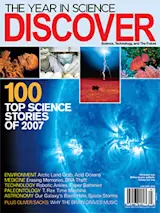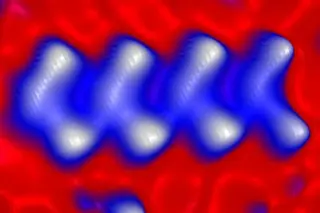If there’s one thing physicists can’t abide, it’s ambiguity. Precision is everything. But the definition of one fundamental physical quantity—the ampere, the unit of electric current—falls somewhat short of that ideal. One ampere is “that constant current which, if maintained in two straight parallel conductors of infinite length, of negligible circular cross-section, and placed 1 meter apart in vacuum, would produce between these conductors a force equal to 2 x 10^-7 newton per meter of length,” according to the International System of Units.
The days of ambiguous amperes, however, may be numbered, according to a paper published last April in Nature Physics by Mark Blumenthal, a physicist at the University of Cambridge. Blumenthal’s team etched germanium-gallium-arsenic nanowires a hundred times thinner than a human hair in a semiconductor. Across those wires, at regular intervals, Blumenthal and his colleagues laid three even thinner gold strips. The gold strips act as gates: A voltage applied to them stops or starts the flow of electrons through the main nanowire with an unprecedented combination of speed and precision.
The new technique still isn’t quite accurate enough to form the basis of a new definition of the ampere, says Blumenthal, who now loses or gains about one electron in 10,000. “For a new standard, you need current to be accurate to 1 part in a million, so that for every million electrons you move through in a second, you’ve got a million, not 1,000,001 or 999,999.”
Go to the next story: 56. Calculus Was Developed in Medieval India






